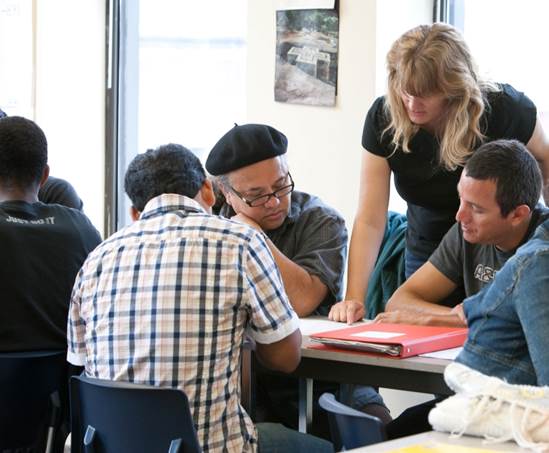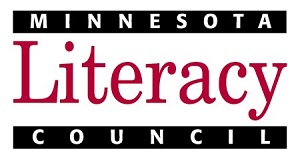- MN ABE Connect
- Archive
- Evaluating the Mathematical Tasks We Give to Our Students
 October 23, 2017
October 23, 2017
Evaluating the Mathematical Tasks We Give to Our Students
Lindsey Cermak, GED InstructorWe give our students tasks to complete every class period. How do we know if these tasks are effective or not? What is our gauge?
The CCR Math Standards provide the WHAT of our teaching and what students need to know. The Mathematical Practices provide the HOW (a list of behaviors) of what we want to see our students demonstrate with any of those standards.
There is a formal student task study tool that provides a framework for peer reflection and analysis of a particular student task. While this is a valuable process we can and should be involved in with our peers, there is also a small but impactful way we can regularly and individually practice reflecting on the effectiveness of the student tasks we give to our students.
 With any task we give our students, we can ask ourselves two questions:
With any task we give our students, we can ask ourselves two questions:
- Does what I am asking my students to do allow them to demonstrate competency of the standard(s) I am addressing, or not? (Or does it leave me wondering if they regurgitated information or merely guessed correctly? Or does it not target the standard(s) at all?)
- Can I/will I observe mathematical practices (behaviors) in my students while they are completing this task?
While there may be tasks that we assign students to build conceptual understanding, to address a key component of a topic not directly stated in the standards, or to develop procedural fluency, for the most part the answers to the two questions above should be “yes.”
If we answer “no,” we shouldn’t necessarily throw the task out; let’s tweak it! Here are a few easy ideas on how to do so:
1) Add one or more questions that force students to explain their reasoning for an answer using words or pictures.
For example:
1. Original task: Worksheet of multiplication facts
- Tweaked task A: Less multiplication facts to answer accompanied by directions to explain either in words or illustrate in pictures how the facts are true. Instead of just “6 x 8 = _____”, create a follow-up question that says, “Either explain in words or illustrate with a picture what 6 x 8 means.” They may write that 8 groups of 6 are 48, they may draw 8 groups of 6, or they may draw a gridded rectangle with 6 x 8 area. For advanced students, have them do this for fractions, too!
- Tweaked task B: Ask students to explain with words or illustrate with a picture how multiplication is shorthand for addition.
2) Rearrange questions or create scaffolded questions from start to finish so that students are required to further their line of reasoning with less prompting as the task continues.
1. Original task: Repetition of the same type of word problem.
- Tweaked task: Keep the beginning problems the same, but start to white-out some of the key information on later problems; have students identify what kind of information is missing that is needed to solve the problem. Students can then add in information of their choosing and solve the problem. Once they are done, compare student problems in a class discussion. This conversation could unveil some truths about number properties since students will likely choose numbers of different size/value. (example: Why is student A’s answer larger than student B’s answer?) For advanced students, have them choose fractions to fill in missing information where it makes sense!
3) Avoid multiple choice questions, unless we ask students to explain in words or pictures why an answer is correct AND why the others are incorrect.
1. Original task: GED workbook page of questions on volume
- Tweaked task: Have students explain how they arrived at their answer, and see if they can find out what procedural errors may have been made to get the other incorrect answers.
2. Original task: Match the name of a shape to its picture.
- Tweaked task: Have students explain in words (using definitions and learned vocabulary of sides, angles, etc.) why the other options do not match the shape name.
The 8 Mathematical Practices
Also, here is a reminder of the 8 Mathematical Practices, and corresponding links to videos of these practices in action. Refresh your memory of what these are and look like so you can easily spot them or incorporate them into your student tasks!
MP1: Make sense of problems and persevere in solving them
MP2: Reason abstractly and quantitatively
MP3: Construct viable arguments and critique the reasoning of others
MP4: Model with mathematics
MP5: Use appropriate tools strategically
MP6: Attend to precision
MP7: Look for and make use of structure
MP8: Look for and express regularity in repeated reasoning
Remember, asking ourselves these two questions on a regular basis can really make a difference in our teaching and for our students:
- Does what I am asking my students to do allow them to demonstrate competency of the standard(s) I am addressing, or not?
- Can I/will I observe mathematical practices (behaviors) in my students while they are completing this task?
Let’s be intentional about giving our students worthwhile tasks to complete – tasks that help them demonstrate competency with the standards and showcase their mathematical thinking!

Newsletter Signup
Get MN ABE Connect—the official source for ABE events, activities, and resources!
Sign UpArticle Categories
- ABE Foundations/Staff Onboarding
- ACES/Transitions
- Adult Career Pathways
- Assessment
- CCR Standards
- Citizenship
- COVID-19
- Cultural Competency
- Digital Literacy/Northstar
- Disabilities
- Distance Learning/Education
- ELA
- Equity/Inclusion
- ESL
- HSE/Adult Diploma
- Listening
- Math/Numeracy
- Mental Health
- Minnesota ABE
- One-Room Schoolhouse/Multilevel
- Professional Development
- Program Management
- Reading
- Remote Instruction
- Science
- Social Studies
- Speaking/Conversation
- Support Services
- Teaching Strategies
- Technology
- Uncategorized
- Volunteers/Tutors
- Writing